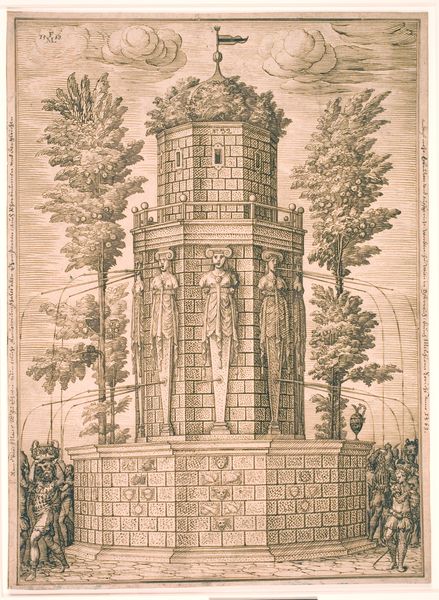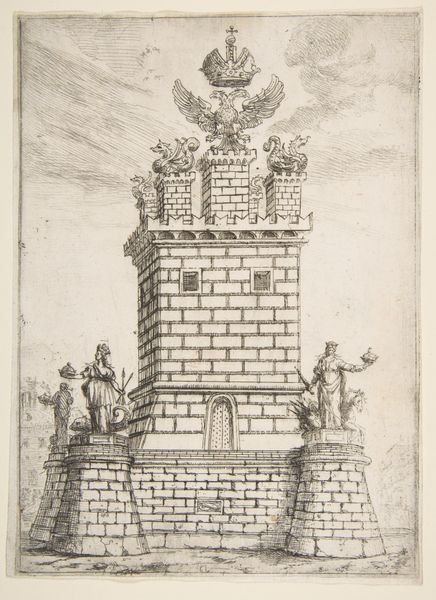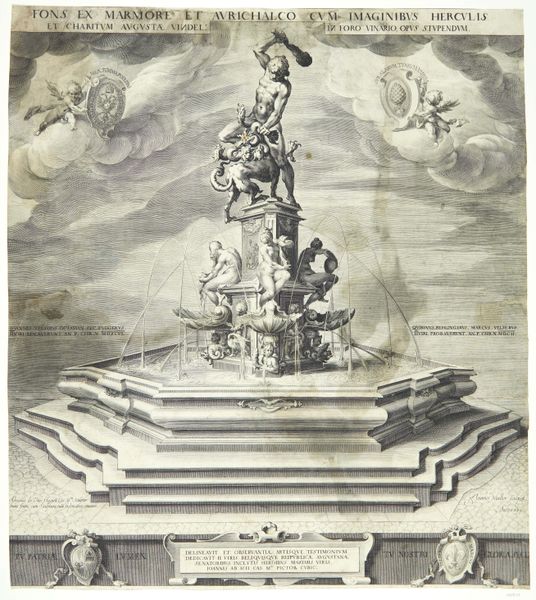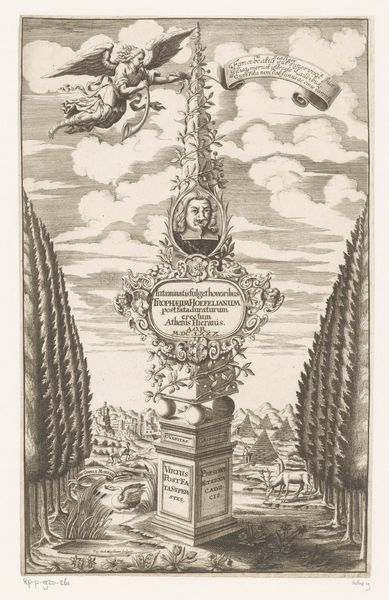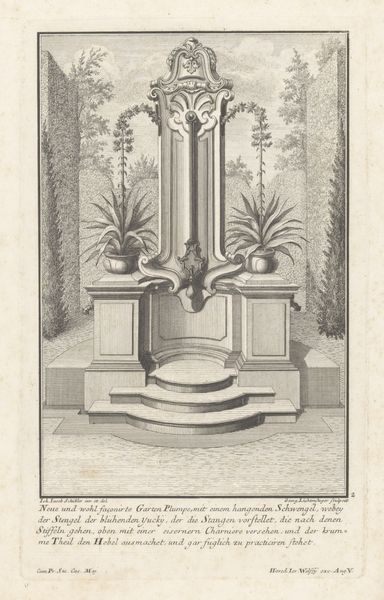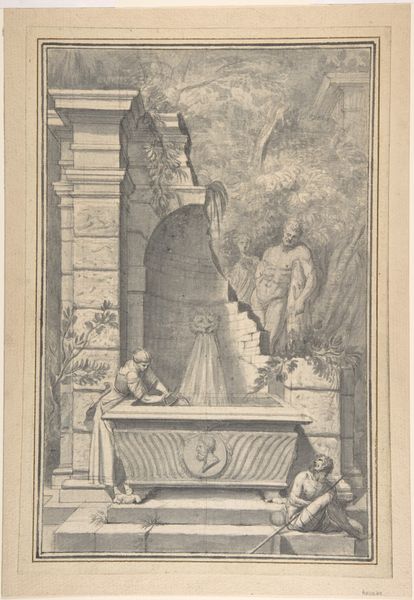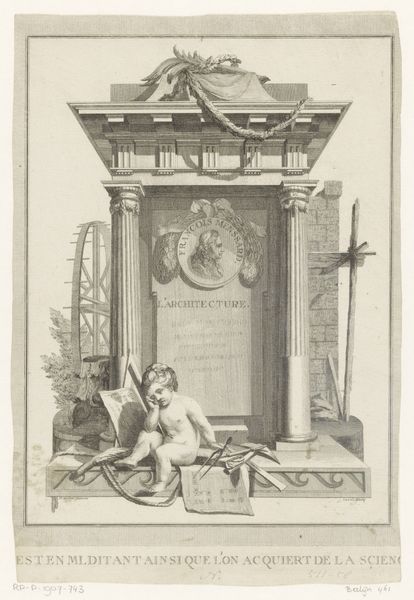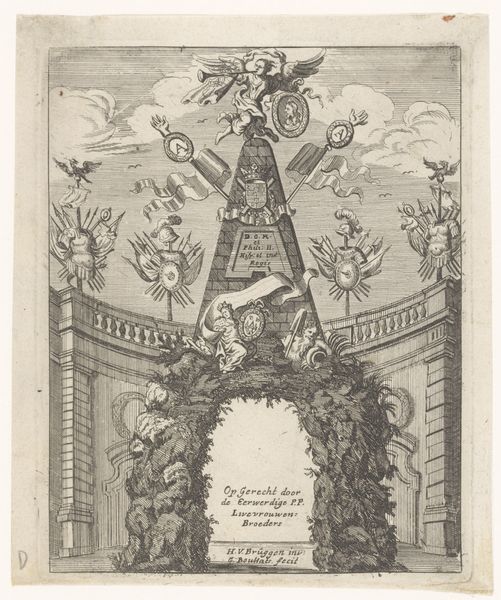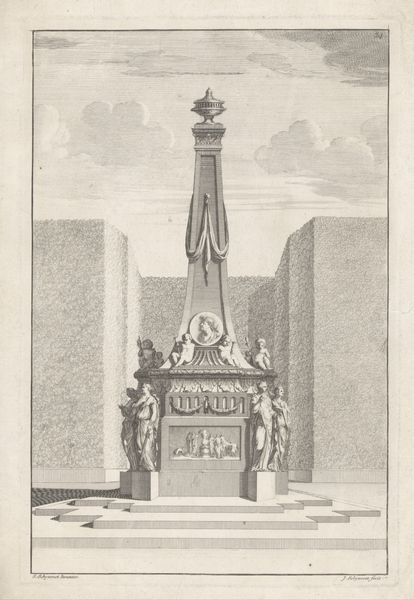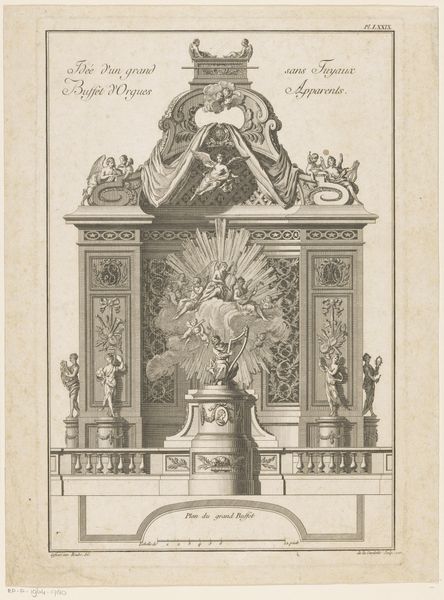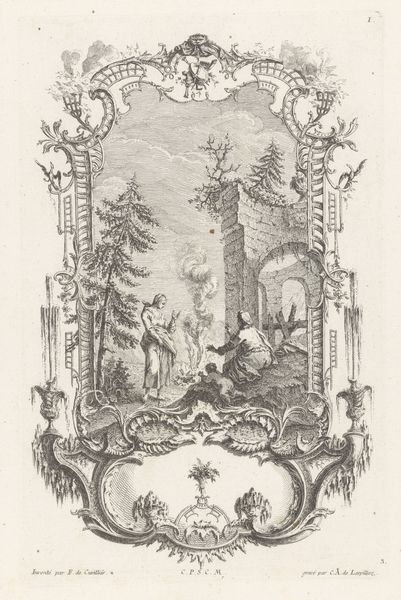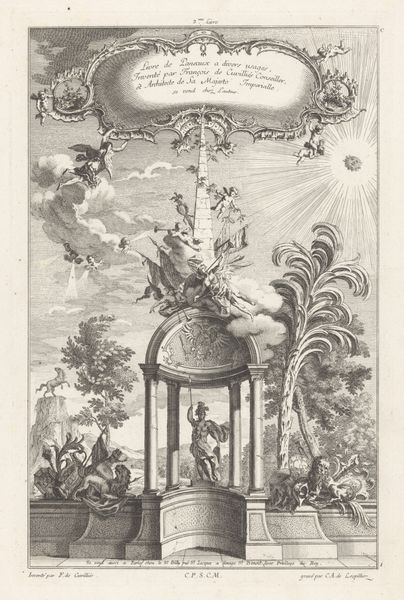
drawing, print, etching
#
drawing
# print
#
etching
#
landscape
#
etching
#
mannerism
#
11_renaissance
#
cityscape
#
history-painting
Dimensions: 298 mm (height) x 319 mm (width) (bladmaal)
Curator: Melchior Lorck's "Fountain with Masks," an etching from 1563, presents a striking Renaissance-era cityscape. Editor: It certainly does have a monumental feel. The stark verticality of the fountain set against that intricate network of lines really focuses the eye. I'm immediately drawn to the architectural structure; the linear perspective and geometric forms dominate. Curator: Absolutely. The interplay between architecture and landscape here points to the emerging roles of artists as recorders of contemporary life and as producers of propaganda for particular patrons. Lorck, having worked as a diplomat and artist in the Ottoman Empire and across Europe, brings that observational experience to this carefully constructed composition. Editor: Interesting. But observe how Lorck guides our gaze; he uses that strong central structure to counterbalance the soft asymmetry of the natural setting. Curator: Well, note too how this seemingly grand architectural scene involves individuals working practically, drawing water. These activities highlight water's centrality to urban life and expose daily necessities intertwined within courtly culture and princely spectacles. Editor: I see what you mean. I was focused on how the repetition of forms gives this sense of harmonic balance, a structured unity, almost architectural in its construction, where individual elements come together as a whole. Curator: And perhaps part of that harmonic structure emerges through the material reproduction itself—the etching. Printmaking allows a wider audience to engage with these architectural achievements, potentially creating imagined connections. Lorck makes choices as a technician to make art, and to reflect on its importance through form and the activities represented, the making of daily life in the European city. Editor: A city, certainly presented as ordered and stable. I admire the work for that, and perhaps I failed to immediately take its deeper message. Thanks for offering this fresh viewpoint, that shifts the perception beyond structure. Curator: Thanks. Ultimately, reflecting on process really enables you to ask different kinds of questions about the artwork.
Comments
No comments
Be the first to comment and join the conversation on the ultimate creative platform.
